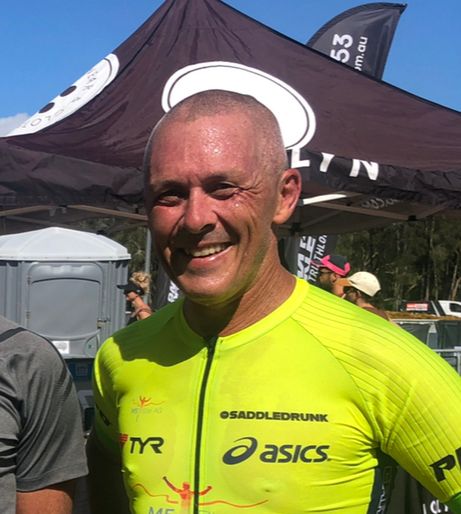Stop the Woodchopper Pedal Stroke – Unlock More Power and Avoid Injury
A misaligned pedal stroke wastes energy and increases injury risk—learn how to fix the "woodchopper" knee pop for better power, efficiency, and longevity in the saddle.


A misaligned pedal stroke wastes energy and increases injury risk—learn how to fix the "woodchopper" knee pop for better power, efficiency, and longevity in the saddle.


How many times have you been riding with your training partners or behind someone and notice their knees popping out at the top of the stroke? In fact we’ve all seen the woodchopper pedal stroke, a common problem, easily identified and when resolved with a systematic approach correct mechanics can be attained to increase power and reduce stress and injury. It amazes me every ride how common this problem and how many athletes, training groups and coaches spend all of their time focused on effort and heat rate without paying any attention to the aesthetics and mechanics of performance. Read on and hopefully you will be able to identify and at least advise your training buddies if there is an area of their pedal stroke that can be improved.
Have you ever given much thought to how many repetitions occur in your hip, knee and ankle joints when pedaling for an hour? It is a simple equation and equates to 4800 repetitions under load. Most riders pay little attention to their mechanics but poor mechanics are a serious injury risk and reduce your power and efficiency. Getting this step correct is more important than your aero wheels in terms of performance. After all it is the driving force behind the bike. What you aim for in a pedal stroke is correct mechanical alignment of the hip, knee and ankle joint in a vertical plane “i.e. the foot and knee should track along a vertical line under the hip.
A woodchopper is a person whose knees pop out to the side at the top of the pedal stroke. The knee laterally pops out of vertical alignment with the hip and ankle at the top of the stroke and then chops back in on the downstroke. The result is a decrease in power, efficiency and significantly increasing the strain on the knee and hip because when vertical alignment is lost, increased angulation occurs between the joints increasing strain.
The woodchopper presents in all levels of cyclist and triathlete, from elite to beginner, young and old. At arises as a result of your biomechanical profile, which can change at any time as a result of injury, surgery, time off, flexibility changes and ageing. The most important thing to do is keep an eye on your knees at the top of the pedal stroke.
A common challenge is that woodchoppers are nearly always diagnosed as having a generic problem with the same solution applied: tight gluteal muscles causing an external rotation of the leg. As a result their cleats are externally rotated to provide relief from pain and pressure and they are advised to stretch and strengthen their gluteals. While this may be the case and they may have tight glutes, making an adjustment simply to relief symptoms of pain is by no means a complete correction and a long term effective solution. The rotated cleats attain hip knee and ankle alignment; however it is not in the same plane as the crank arm so it is not really an effective solution.
In many cases the external rotation of the cleats is in contradiction to the rider’s neutral position of the feet when screened in a flexed forward position so it is possible the proposed diagnosis and correction is actually causing more harm than good.
You will notice there are a number of contributors to the woodchopper and tight external hip rotators are not the most common cause. Often athletes present with more than one contributor requiring an integrated strategy which goes beyond stretching and strengthening. In many causes varus angulation in the knees and feet and stance width are the cause and stretching or strength work has no effect as these are skeletal characteristics.
To correctly resolve, care and consideration needs to be given following a screening of the individual with an experienced and educated fit professional will put more punch and lifeline into your engine (legs).